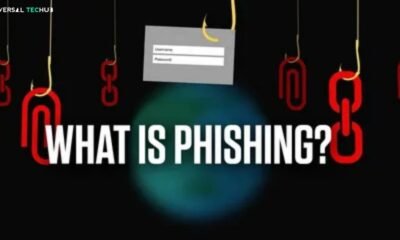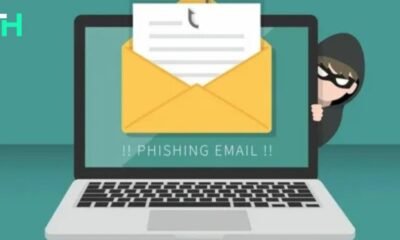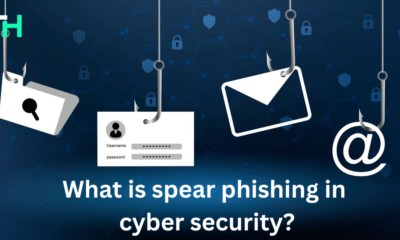Cybersecurity
How to Ensure Data Privacy? A Comprehensive Guide for Individuals & Businesses

Introduction: Why Data Privacy Matters
In today’s interconnected world, our personal and professional lives are increasingly dependent on digital technologies. Whether you’re shopping online, using cloud storage, or running a business, you’re constantly generating data, and that data is valuable. But here’s the catch: if not properly protected, it can be misused, leaked, or even stolen.
Data privacy is no longer a luxury; it’s a necessity. With cyber threats, identity theft, and data breaches on the rise, knowing how to ensure data privacy has become a vital skill for individuals and organizations alike. This guide will walk you through how to maintain trust in the online world by exploring effective ways to ensure data privacy.
Understanding Data Privacy: Key Concepts
What Is Data Privacy?
“Data privacy refers to the right to control how personal or organizational information is collected, used, shared, and stored.” It includes everything from a user’s name and address to sensitive financial or health information.
Data Privacy vs. Data Security: What’s the Difference?
While often used interchangeably, these two terms differ:
- Data privacy focuses on who has access to the data and how it’s used.
- Data security deals with the measures taken to protect data from unauthorized access or breaches.
Think of privacy as the rules and expectations around data, and security as the tools and technologies used to enforce those rules.
Why Is Data Privacy Important in the Digital Age?
- Protects from identity theft and fraud
- Builds customer trust and brand reputation
- Ensures regulatory compliance (e.g., GDPR, HIPAA, CCPA)
- Prevents financial and legal repercussions
A study by IBM found that the average cost of a data breach in 2023 was $4.45 million, proving how costly poor privacy practices can be.
How to Ensure Data Privacy: Best Practices
Protecting your data starts with practical steps that both individuals and organizations can implement today. Here’s a deeper look at the best practices that ensure data privacy in an ever-evolving digital landscape:
Use Strong Passwords and Two-Factor Authentication
Passwords are your first line of defense. Yet, weak and reused passwords are still a top cause of data breaches. Here’s how to secure your credentials:
- Create complex and unique passwords: Use a combination of uppercase and lowercase letters, numbers, and special characters. Avoid predictable words like “password123” or personal information like your birthdate.
- Never reuse passwords across multiple accounts. If one account is compromised, others could follow.
- Use a password manager: Tools like LastPass, 1Password, or Bitwarden can generate and store strong, unique passwords for each site securely.
- Enable Two-Factor Authentication (2FA): This adds an extra layer of security by requiring a second form of verification, like a code sent to your phone or an authenticator app, on top of your password.
Real-world tip: In 2022, Google reported that enabling 2FA blocks over 99% of automated cyberattacks.
Keep Software and Devices Updated
Outdated software is a known vulnerability exploited by hackers. Keep your digital environment secure by:
- Installing updates promptly for operating systems, web browsers, antivirus tools, and mobile apps.
- Enabling automatic updates ensures your systems are always running the latest versions with security patches.
- Use reputable antivirus and firewall programs that offer real-time protection and alert you to potential threats.
Example: The infamous Equifax breach in 2017 happened due to a failure to patch a known software vulnerability—a mistake that cost them over $700 million in settlements.
Limit Data Collection and Access
Data privacy isn’t just about security—it’s also about minimizing exposure. To achieve this:
- Collect only the data you need: Avoid hoarding unnecessary personal or customer data.
- Follow the Principle of Least Privilege (PoLP): Give employees access only to the data they require to perform their roles.
- Conduct regular access reviews: Audit who has access to sensitive data and revoke permissions that are no longer needed.
This practice not only strengthens internal privacy but also ensures compliance with regulations like GDPR and HIPAA.
Encrypt Sensitive Information
Encryption is the process of converting data into a scrambled format that can only be read with a decryption key. It’s essential for:
- Emails: Use services like ProtonMail or enable end-to-end encryption in Outlook or Gmail.
- Cloud storage: Choose platforms like Tresorit or SpiderOak that offer client-side encryption.
- Files shared online: Encrypt documents before sharing via tools like VeraCrypt or AxCrypt.
Must Read: FBI recommends Encrypted Messaging due to iPhone, Android text vulnerabilities to hacking
Pro tip: Encryption protects your data even if it falls into the wrong hands—a key defense against data leaks.
Use Secure Networks
Using unsecured networks can expose your sensitive data to cybercriminals. Here’s how to maintain secure connections:
- Avoid public Wi-Fi for banking, shopping, or accessing confidential work documents.
- Use a VPN (Virtual Private Network) to encrypt your internet connection and hide your IP address from trackers or hackers.
- Secure your home or business network:
- Changing default router credentials
- Using strong Wi-Fi passwords
- Enabling WPA3 encryption, the most secure wireless protocol
Pro tip: Public Wi-Fi networks in airports, hotels, and cafes are hotspots for man-in-the-middle attacks. Always assume they’re unsafe unless secured by a VPN.
Educate Employees and Users
The weakest link in cybersecurity is often human error. Businesses must prioritize ongoing education:
- Train employees to recognize phishing scams—especially emails with suspicious links or attachments.
- Enforce secure file-sharing protocols, such as avoiding unencrypted email attachments.
- Encourage a report-first culture: If something seems suspicious, employees should feel empowered to report it immediately.
Regular security awareness training significantly lowers the risk of insider threats and accidental data leaks.
Implement a Data Privacy Policy
Having a clear, transparent data privacy policy builds user trust and helps ensure compliance with legal frameworks. A strong policy should include:
- What data do you collect? Be specific about the types of personal or usage data gathered.
- Why and how you use it: Explain the purpose—e.g., improving service, personalization, marketing.
- Where and how you store it: Mention whether data is encrypted, stored locally, or in the cloud, and the security measures in place.
- Who you share it with: List third-party services or partners that might have access, and why.
- User rights and controls: Include instructions on how users can access, modify, or delete their data.
Note: Privacy policies aren’t just for big tech companies. Even small websites that collect emails, cookies, or analytics need one to stay compliant.
Data Privacy Laws and Regulations You Should Know
General Data Protection Regulation (GDPR) – EU
Applies to any organization handling the data of EU citizens. Key rights include:
- Right to access
- Right to be forgotten
- Data portability
Must Read: Which organisation is responsible for enforcing data protection law in the UK?
California Consumer Privacy Act (CCPA) – USA
Gives California residents the right to:
- Know what personal data is collected
- Request deletion of data
- Opt-out of data selling
Health Insurance Portability and Accountability Act (HIPAA) – USA
Protects sensitive health information and governs how it is handled by healthcare providers.
Pro Tip: Businesses must stay updated on global data privacy regulations if they serve international customers.
Real-World Examples of Data Privacy Breaches
Facebook–Cambridge Analytica Scandal (2018)
Facebook allowed a third-party app to collect personal data from millions of users without proper consent, leading to political misuse and a loss of public trust.
Equifax Breach (2017)
Failure to patch a known vulnerability exposed over 147 million personal records, including Social Security numbers and financial information.
These incidents highlight the importance of proactive data privacy management rather than reactive damage control.
Common Mistakes to Avoid
- Using the same password across multiple accounts
- Ignoring software updates
- Collecting more data than needed
- Failing to back up data securely
- Not reviewing third-party apps and tools for data handling
FAQs: What People Also Ask
How can I protect my privacy on social media?
Avoid oversharing, review privacy settings, and limit access to personal posts.
What is the safest way to store sensitive data?
Use encrypted cloud storage or external hard drives with strong password protection.
Can deleting cookies help with data privacy?
Yes, it reduces online tracking, but doesn’t eliminate all forms of data collection.
Conclusion: Take Control of Your Digital Footprint
Ensuring data privacy isn’t just about ticking compliance checkboxes—it’s about protecting your identity, business, and peace of mind. From securing passwords to understanding data privacy laws, every step counts. In a world where data is currency, safeguarding it is your responsibility.
Read this blog: How does a data loss prevention system work: A Step-by-Step Process
-

 Phishing attack7 months ago
Phishing attack7 months agoWhat is Spear Phishing and How You Can Identify This Scam?
-

 Social engineering attack8 months ago
Social engineering attack8 months agoBaiting Attacks Explained: A Closer Look at Cyber Threat Tactics
-

 Social engineering attack7 months ago
Social engineering attack7 months agoWhat are Social Engineering Attacks – A Complete Guide to Cyberattacks Prevention
-

 Social engineering attack8 months ago
Social engineering attack8 months agoSpear Phishing Attack: A Targeted Cyber Threat
-

 Social engineering attack8 months ago
Social engineering attack8 months agoWhat is spear phishing attack? A detailed guide
-

 Phishing attack6 months ago
Phishing attack6 months agoWhat Are Phishing Emails? A guide for you
-

 Social engineering attack8 months ago
Social engineering attack8 months agoWhat is spear phishing in cyber security?
-

 Social engineering attack8 months ago
Social engineering attack8 months agoSpear phishing vs phishing: Understand the Risks




















